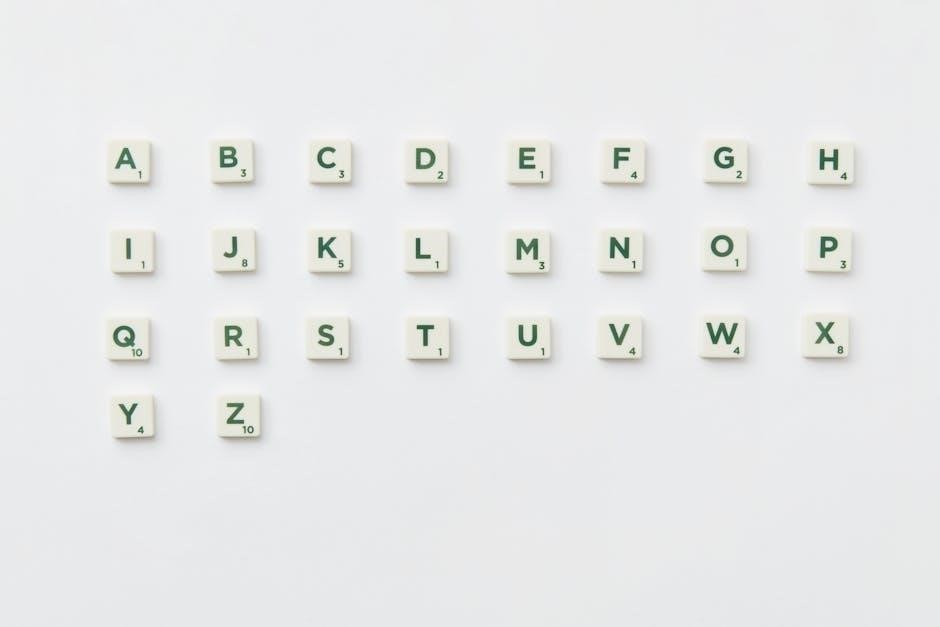A character reference letter for court is a written statement detailing an individual’s moral qualities, providing insight into their character for legal proceedings.
1.1 What Is a Character Reference Letter?
A character reference letter is a formal document written to provide insight into an individual’s moral and ethical qualities, typically for legal purposes. It is usually authored by someone who knows the person well, such as a family member, friend, employer, or community leader. The letter highlights the individual’s positive traits, reputation, and behavior, offering a personal perspective that may not be evident in legal arguments. Its primary purpose is to assist courts in understanding the defendant’s character, helping judges make informed decisions. The letter is often used in criminal cases to support leniency or alternative sentencing, showcasing the individual’s potential for rehabilitation and positive contributions to society.

1.2 The Role of Character Reference Letters in Court Proceedings
A character reference letter plays a pivotal role in court proceedings by offering a personal perspective on the defendant’s character, which may not be apparent through legal arguments alone. It provides judges with insight into the individual’s moral qualities, reputation, and behavior, helping to assess their potential for rehabilitation or leniency; These letters are particularly influential in criminal cases, where they can support requests for reduced sentences, probation, or alternative penalties. By highlighting positive traits and community contributions, the letter humanizes the defendant, allowing the court to make more informed and compassionate decisions. Its impact lies in balancing legal facts with personal context, enhancing the fairness of the legal process.
Purpose and Importance of a Character Reference Letter
The purpose of a character reference letter is to provide a personal perspective on the defendant’s moral qualities and behavior, aiding the court in making informed decisions.
2.1 Understanding the Goal of the Letter
The primary goal of a character reference letter is to humanize the defendant by showcasing their positive traits, such as honesty, responsibility, and kindness. It aims to provide a personal perspective, highlighting how the individual is perceived by others in their community or personal life. The letter should emphasize the defendant’s moral character, offering insights that go beyond the legal arguments presented in court. By doing so, it helps the judge or jury understand the defendant’s background and potential for rehabilitation. The letter’s sincerity and specificity are crucial in making it impactful and credible during legal proceedings.
2.2 Why Courts Value Character Reference Letters

Courts value character reference letters because they provide a personal perspective on the defendant, offering insights into their moral qualities and reputation. These letters help humanize the individual, showcasing traits like honesty, empathy, and responsibility. By sharing personal experiences, the writer adds context that may not emerge in legal arguments. Judges appreciate these letters as they offer a balanced view of the defendant, aiding in fair sentencing decisions. A well-crafted letter can demonstrate the defendant’s potential for rehabilitation and community contribution, making it a valuable tool in legal proceedings. Courts rely on these letters to gain a more comprehensive understanding of the individual.

Structure and Key Elements of a Character Reference Letter
A character reference letter should include letterhead, date, addresses, introduction, body detailing the individual’s qualities, and a conclusion, ensuring clarity and professionalism throughout.

3.1 Essential Components of the Letter

The letter must include the writer’s contact information, their relationship to the defendant, and specific examples of the defendant’s positive character traits, such as honesty or empathy.

3.2 How to Organize the Letter Effectively
The letter should follow a business block format, starting with the writer’s contact information and date. Address the judge formally, introduce yourself, and explain your relationship with the defendant. Use bullet points or clear paragraphs to highlight key character traits, such as honesty, responsibility, and compassion. Include specific examples of the defendant’s positive actions and how they demonstrate good character. Conclude by respectfully requesting the court to consider the letter and reaffirm your confidence in the defendant’s integrity. Maintain a formal tone throughout and avoid legal jargon. Ensure the letter is concise, well-structured, and free of errors for maximum impact.

Writing Tips for a Compelling Character Reference Letter
Be specific, truthful, and respectful. Include personal anecdotes to illustrate the defendant’s character. Maintain a sincere tone and ensure the letter is well-structured and error-free.
4.1 Best Practices for Drafting the Letter
When drafting a character reference letter, focus on sincerity and clarity. Be specific about the defendant’s positive qualities and provide examples to illustrate their character. Maintain a respectful tone, addressing the judge formally. Avoid exaggerations or emotional appeals, sticking to factual observations. Ensure the letter is well-organized, with a clear introduction, body, and conclusion. Use professional language and proper formatting, including your contact information. Highlight the defendant’s contributions to their community or family, showcasing their ability to reform or lead a lawful life. Personal anecdotes can strengthen the letter’s impact, demonstrating the defendant’s good character effectively.
4.2 Common Mistakes to Avoid
When writing a character reference letter, avoid common pitfalls that could undermine its effectiveness. Overly emotional language or exaggerated claims may appear insincere and diminish credibility. Equally important is avoiding vague statements; provide specific examples to illustrate the individual’s positive qualities. Do not include irrelevant personal opinions or details unrelated to the defendant’s character. Additionally, refrain from discussing legal specifics or making excuses for the alleged offense. Ensure the letter is well-structured, professional, and free of grammatical errors. Failure to include your contact information or clearly state your relationship with the defendant can also weaken the letter’s impact. Avoid these mistakes to ensure the letter is taken seriously and viewed as a genuine endorsement of the individual’s character.
The Impact of a Character Reference Letter on Legal Proceedings
A well-crafted character reference letter can significantly influence court decisions, offering a personal perspective that complements legal arguments and potentially leading to more favorable outcomes.
5.1 How the Letter Can Influence the Judge’s Decision
A character reference letter can significantly sway a judge’s decision by providing a personal perspective on the defendant’s moral character, helping the court understand their background and circumstances. Judges value these letters as they offer insights into the defendant’s integrity, responsibility, and potential for rehabilitation. A well-written letter can highlight positive traits, such as compassion, honesty, and community involvement, which may not be evident from legal arguments alone. This humanizing element can lead to more lenient sentencing, such as probation or community service, rather than harsher penalties. The letter’s sincerity and specificity can make it a compelling factor in the judge’s deliberations.
5.2 The Difference a Well-Written Letter Can Make
A well-written character reference letter can make a significant difference in legal outcomes by humanizing the defendant and providing context to their actions. It can lead to charges being dismissed, sentences reduced, or alternative penalties such as probation or treatment instead of incarceration. A compelling letter highlights the individual’s positive qualities, showing potential for rehabilitation and community contribution. This can influence the judge to consider a more lenient approach, balancing justice with compassion. The letter’s sincerity and specificity are crucial in making a strong, lasting impression that distinguishes it from less effective submissions.

Examples and Templates for Character Reference Letters
Examples of character reference letters for court are available online, offering templates from employers, friends, and family. Websites like Loio provide downloadable PDF samples for guidance.
6.1 Sample Character Reference Letters for Different Scenarios
Sample character reference letters for court are designed to address various legal scenarios, such as criminal cases, immigration hearings, or employment disputes. These templates provide a framework for writing effective letters tailored to specific situations. For instance, a letter from an employer might focus on the defendant’s work ethic and reliability, while a letter from a family member could highlight personal qualities like empathy and responsibility. Online resources offer downloadable PDF samples, such as those from Loio, which guide writers in crafting compelling references. These examples ensure clarity and professionalism, helping to convey the defendant’s character effectively to the court.
6.2 Where to Find Reliable Templates Online
Reliable templates for character reference letters can be found on legal resource websites, such as Loio, which offers downloadable PDF samples tailored for court use. These templates are designed to guide writers in crafting professional and effective letters, ensuring they meet legal standards and convey the necessary information clearly. Additionally, legal aid websites and law firm resources often provide accessible templates that can be customized to fit specific scenarios, helping individuals support their cases with well-structured references;
